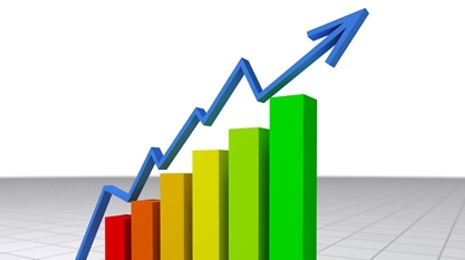December Closes 5th Straight Year of Used Price Hikes

Though used supply may finally be loosening, it didn’t expand enough to push used prices down in 2013.
According to NADA’s latest Guidelines report, December closed out the fifth straight year of used-vehicle price growth.
More specifically, 2013 ended with prices of units up to 8 years in age 0.4 percent higher than they were in 2012.
Though prices may have been up for the full year, the month of December saw a 1-percent decline in wholesale prices, according to NADA data, compared to a 0.3-percent drop during the same period of last year.
Interestingly, despite winter weather, large SUV prices fell the most this past month, dropping by 2.6 percent.
Perhaps following more seasonal trends, luxury car prices also took a downturn in December, falling by 2.6 percent.
“The stiffer drop in prices relative to most other segments isn’t uncommon for the time of year and was expected, particularly given the ongoing increase in off-lease supply returning to the marketplace,” NADA UCG’s Jonathan Banks wrote in the report.
On the other hand, compact and mid-size utilities performed well, declining by 0.7 percent and 1 percent, respectively. Compact and mid-size car prices touted strong retention as well last month, dropping by 1.1 percent and 0.8 percent, respectively.
As for what the market saw over the past week, Black Book editorial director and senior vice president Ricky Beggs outlined price movement in his latest “Beggs on the Used Car Market” video report.
Last week, amid an average of 1,733 price adjustments per day, the car segments saw an average decline of $78.
The trucks saw a slightly stronger retention rate with an average drop of $55. The average drop for cars and truckers were “greater levels of decline” than what was seen during the same period of 2012.
Though larger than what was seen in 2012, these declines are still slight — which is in line with NADA UCG’s prediction for the month.
According to the January Guidelines report, used prices are expected to be “flat to down just slightly” this month before rising by 2.5 percent to 3 percent through March.
“Historically, used-vehicle prices change little between December and January as dealer acquisition activity begins to heat up in preparation for the spring surge in demand stimulated by the receipt of tax rebate checks,” said Banks. “After staying more or less flat in January, prices commonly increase anywhere from 2 percent and 3 percent through March or April before declining over the remainder of the year.”

 View The Latest Edition
View The Latest Edition

